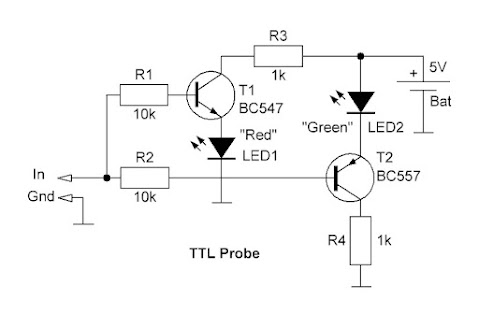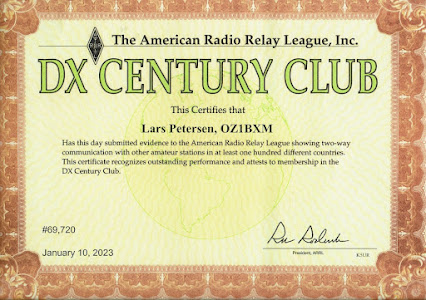ADX-S stands for Arduino Digital Transceiver - Superheterodyn. ADX-S is a QRP transceiver with four modes: WSPR, FT8, FT4 and JS8. There are two versions available; one with 4 bands (40m, 20m, 15m, 10m) and another one with 7 bands (40m, 30m, 20m, 17m, 15m, 12m, 10m).
ADX-S is open source. I decided to build it from a 7-band kit sold by crkits.com. Help is available in the crkits group.
Figure 1. ADX-S front.
The ADX-S transceiver has 3 PCB with the same size: front plate, main board, rear plate. They all measure 9.7 cm x 9.7 cm. All components and connectors are on the main board. The front and rear plates are "sandwiched" to the main board using threaded distance bolts. This is a smart solution to the cabinet problem (cabinets for ham radio projects are difficult to source).
Figure 2. ADX-S main board.
Assembly
Kit assembly went okay with one exception: I swapped L1 and L3 on some of the low-pass filter boards. This error made the output power disappear. After correcting the error, the low-pass filters worked just fine. The output is 2-3 watt RF depending on the chosen band.
The assembly challenge is medium. The solder pads are close and their size is small - this is not a beginner's task! An advantage of the kit is the lack of SMD-components. All components are leaded. Two units (Arduino Nano, SI5351) are populated with SMD, but they are assembled in a factory and are easily soldered to the main board using pins.
Figure 3. ADX-S rear.
Frequency read-out
Figure 4. Reading the frequency band.
The frequency band can only be set (or read) during upstart of the ADX-S. During power-on the button "Band" is pushed. When the "TX" LED is lit, the band can be set using the two grey buttons. When finished, the "TX" button is pushed, and the band information is saved. Now the LEDs indicate mode. The band information is no longer visible.
During normal power-on, there will be 3 flashes from the LEDs to indicate the band. When flashing is done, the LEDs will show mode.
Receiver
The heart of the receiver is CD2003 which is a clone of Toshiba's integrated receiver TA2003. The receiver is superheterodyn with IF at 455 kHz and a ceramic filter for selectivity. The RF signal is taken from the low-pass filter. An RF switch isolates the receiver from the low-pass filter during transmit. The LO is generated by SI5351 (frequency generator for RX and TX).
Transmitter
The transmitter is surprisingly simple. The ordinary concept is to employ a DBM (double balanced mixer) and LO to get from AF to the transmit frequency. Instead, the transmit frequency is generated directly by the programmable SI5351. The output from SI5351 is amplified and sent to 3 transistors connected in paralled (3 x BS170 MOSFET). The LPF (low pass filter) is on a small PCB which is connected to the main bord with pins. The LPF is specific for each band, and is swapped when changing band.
Connecting to a computer
Figure 5. Connecting ADX-S to a computer.
Figure 5 shows how the ADX-S is connected to a computer. Computer software is WSJT-X (free) and this software codes and decodes FT8, FT4, and WSPR. Different software is used for JT8.
An Android smartphone can replace the computer. In that case the app FT8CN is installed.
73 from OZ1BXM Lars
My homepage: www.oz1bxm.dk


















